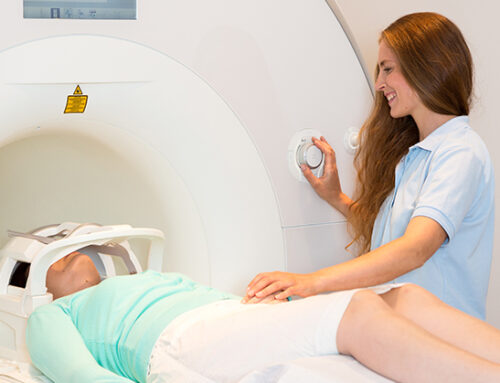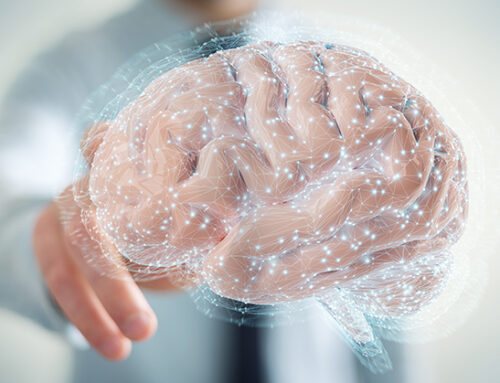I don’t think a lot of people are aware of what a major factor head injuries are in making you susceptible to dementia.
The public probably has some awareness of the problem because it’s now known that pro football players – and even high school and college athletes – can get dementia decades later because of repeated concussions they suffered back when they were on the field.
But when your own memory starts to slip, you probably don’t think of the car accident or other big bump that gave you a concussion decades ago.
You should.
But you should not feel hopeless if there’s a brain injury in your past. Savvy doctors are successfully treating people like yourself.
All it takes is one, single traumatic brain injury (TBI) to put you at major risk for the later development of neurodegenerative conditions including Alzheimer’s.
Autopsies show that TBI patients are more likely to have a buildup of Alzheimer’s-linked proteins. But what about living patients?
That’s what some UK scientists wanted to find out.
Damaged Tau Forms Tangles
Every year about 2.75 million people suffer a traumatic brain injury in the US. Population studies link these patients to a much greater risk of Alzheimer’s.
In 2012, neurologists from the University of Pennsylvania found a widespread and extensive buildup of plaque in a large percentage of deceased long-term survivors following a single TBI, compared to controls who had never suffered such a head injury.
Scientists from Imperial College London and the University of Glasgow wanted to see if there was evidence for this in living patients.
So they recruited 21 men and women aged 29 to 72 who had experienced a moderate to severe head injury anywhere from 18 to 51 years earlier. They also had a control group of eleven healthy individuals who had not suffered a head injury.
Each had a PET scan and an injection of flortaucipir, which binds to tau proteins and lights up tau pathology on the scan.
Tau is a normal part of the brain, providing structural support to nerve cells, but when damaged it forms clumps or tangles that are linked to Alzheimer’s and other forms of dementia.
Future Treatments Could Target Tau
On viewing the scans, tau tangles in living patients who had endured a single traumatic brain injury could be seen for the first time. These folks also had greater amounts of nerve damage in their white matter, which makes up a sizable portion of the brain.
None of the eleven healthy volunteers displayed any evidence of tau pathology.
Compared to the healthy participants, the injured group had impairments in multiple areas of cognition such as verbal and visual memory and processing speed. However, a subgroup of patients who recovered well from their injuries had similar outcomes to healthy controls on most measures.
Lead researcher Dr. Nikos Gorgoraptis believes their findings are important:
“What is exciting about this study is this is the first step towards a scan that can give a clear indication of how much tau is in the brain, and where it is located.
“As treatments develop over the coming years that might target tau tangles, these scans will help doctors select the patients who may benefit and monitor the effectiveness of these treatments.”
The Brain is Fragile
Other experts were also asked to comment.
Dr. Mark Dallas, Associate Professor in Cellular Neuroscience, University of Reading, said, “This research study highlights the fragile nature of the human brain. Their observations…show that while the initial injury is managed there may be unseen (until now) consequences for brain health in the longer term.
“It should be noted that this research does not suggest that a single brain injury will automatically lead to dementia, as there are numerous other factors to consider…”
Tara Spires-Jones, a neuroscientist from the University of Edinburgh, Scotland added, “This study shows that a single, severe injury is associated with build-up of tau pathology detected in the brain many years after injury. The tau pathology…was associated with worse cognitive performance and markers of brain degeneration.
“The study…is important because it demonstrates that a single severe injury is likely enough to kick off lasting tau-related brain damage.”
Damaging Effects Can Be Reversed
For those who have suffered a TBI and have concerns about the future, it’s worth bearing in mind the work of Dr. Daniel G. Amen, who specializes in the treatment of former NFL players.
We interviewed Dr. Amen in our video documentary series Regain Your Brain.
He has demonstrated in several published studies that making dietary and lifestyle changes, and taking specific nutritional supplements, stimulates greater blood flow to the brain and significantly improves information processing, memory and reasoning.
After his first study he said:
“The exciting news in my mind is that if we can demonstrate improvement in football players with chronic brain damage, it offers hope for the millions of people who have suffered a traumatic brain injury.”
The Amen Clinics can be found in eight locations across the US.







